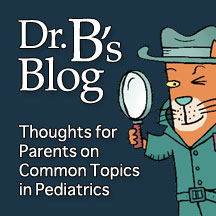Swaddling is a time-honored method to help babies calm down. It helps fussy babies relax during wakeful periods and makes it easier for most newborns to sleep.
Infants respond to swaddling for two reasons:
- Newborns have a number in innate reflexes, including the Moro (or startle) Reflex. If a newborn is jostled or surprised by a noise or physical movement, he will typically extend his arms outward and then rapidly flex them in front of his body. A Moro response can be triggered by an infant’s own movements or by actions coming from his surroundings. Either way, the reflex may cause the infant to wake up or start to cry. Swaddling inhibits the Moro Reflex.
- Before birth, infants are in the confined space of the uterus. While it is important to be able to move their arms and legs after birth, research has shown that newborns calm down if they are held with their arms against their bodies. This can be accomplished by a reassuring hug or by swaddling them in a blanket.
Like all aspects of parenting, it is important to strike a balance with your baby. It is important for your baby to experience different types of physical interactions. This includes hugs, kisses, skin-to-skin contact, gentle rocking, and massage, etc. So while swaddling can be a real “life saver” when a baby is fussy it is best used when the child is sleeping or for brief periods (around 20 to 30 minutes) while awake.
Two aspects of swaddling are important for you to consider:
- The best way to swaddle babies is by keeping their arms at their sides. The reason for this is because most babies will “break out” of the swaddle if their arms are positioned in front of their chest. There are a number of commercial blankets to make this easier to do.
- The goal of swaddling a baby is to restrain his arms. The swaddle should not restrict the baby’s legs because it is important for him to be able to flex his knees and hips at all times. The reason this is important is because infants can develop a hip problem (developmental dysplasia of the hip) if their hips are restrained in an extended (straight) position.
Most doctors recommend that parents stop swaddling babies by about four months. At this age, the newborn reflexes that can interfere with a baby’s sleep have disappeared and many babies are starting to roll (and trying to break out of a swaddle). This is also the time when a baby will more actively interact with his surroundings. He will grab objects and explore them with his mouth. He may use a pacifier or suck his thumb for self-soothing purposes.











